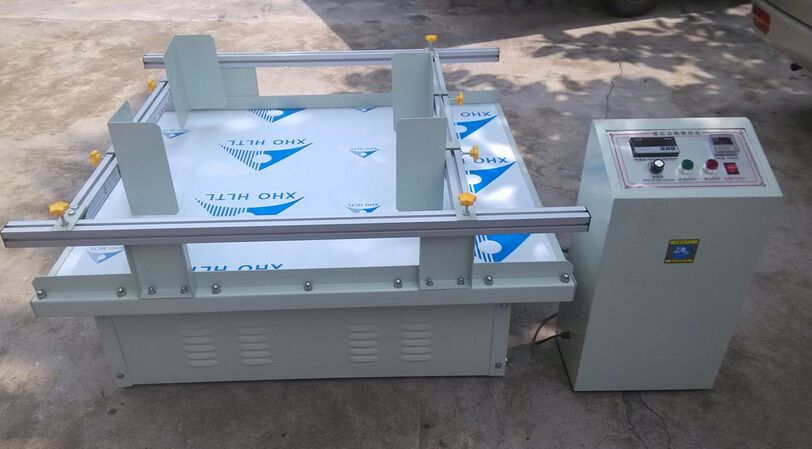ASTM D999-20 Vibration Fatigue Test
The ASTM D999-20 vibration fatigue test is a critical procedure used to assess the durability and resilience of packaging materials under conditions that simulate the dynamic stresses encountered during transportation. This test is essential for ensuring the integrity and reliability of packaging components, particularly those subjected to repeated impacts or vibrations.
During transport, packaging undergoes a series of mechanical stimulations such as jolts, knocks, drops, and shocks. These forces can lead to fatigue failure, which may result in compromised product protection and potential financial losses due to damaged goods. The ASTM D999-20 test aims to replicate these conditions accurately so that manufacturers can identify any weaknesses or vulnerabilities in their designs before they reach the market.
The standard specifies a range of frequencies at which specimens are subjected to cyclic loading, typically between 1 and 50 Hz. Specimens are also exposed to varying amplitudes within this frequency band to simulate real-world scenarios more accurately. The test duration can vary depending on factors like material type, expected lifespan, and environmental conditions but usually lasts for several hours or even days.
Once testing is complete, the integrity of each specimen must be evaluated carefully. Defects such as cracks, splits, or deformations indicate a failure point, signaling where improvements need to be made in future iterations of the design. By identifying these weak spots early on, companies can enhance their product offerings and maintain high standards of quality assurance.
Understanding the nuances behind ASTM D999-20 enables stakeholders involved in packaging development to make informed decisions about material selection, structural design optimization, and process improvements. It also helps them stay compliant with industry regulations while delivering superior performance across diverse applications ranging from consumer goods to pharmaceuticals.
Scope and Methodology
| Parameter | Description |
|---|---|
| Type of Load | Cyclic loading with variable frequency between 1-50 Hz. |
| Duration | Varies based on sample characteristics and environmental conditions; often several hours to days. |
| Amplitude Range | Variable depending on the material being tested, usually set within a specified range. |
| Samples | Packages or components made from various materials including cardboard, plastic, metal, etc. |
| Data Collection | Measurements of displacement, acceleration, strain, and other relevant parameters during the test. |
| Acceptance Criteria | No visible defects such as cracks or deformations after testing. |
| Reporting | Detailed reports outlining results, observations, and recommendations for improvement. |
The ASTM D999-20 vibration fatigue test involves subjecting packaging samples to controlled cycles of mechanical stress. These stresses mimic the real-world conditions experienced during transportation, allowing manufacturers to evaluate how well their products withstand such environments. The scope covers both static and dynamic loading scenarios, ensuring comprehensive evaluation.
Data collected throughout the process includes measurements like displacement, acceleration, strain, etc., which provide valuable insights into the behavior of the tested materials under different stress levels. Compliance with international standards ensures that results are consistent across various laboratories worldwide, enhancing confidence in the test outcomes.
Industry Applications
The ASTM D999-20 vibration fatigue test finds extensive application across numerous industries where reliable packaging is crucial for protecting sensitive goods during transit. In consumer goods manufacturing, it helps ensure that products arrive at retail outlets safely and undamaged after traveling through various modes of transport.
For pharmaceutical companies, the test plays a vital role in safeguarding medication integrity by preventing contamination or degradation caused by improper handling during shipping. Additionally, this type of testing is beneficial for electronics manufacturers who need to protect delicate components from mechanical damage due to shocks and vibrations.
The automotive sector also benefits significantly from ASTM D999-20 compliance because it ensures that spare parts are securely packaged so they can endure rigorous road conditions without sustaining damage. This enhances customer satisfaction by reducing returns rates and improving overall service quality.
Moreover, the aerospace industry relies heavily on robust packaging solutions to safeguard critical components during air travel. The ASTM D999-20 test helps ensure that these packages meet stringent safety requirements while maintaining optimal performance throughout their lifecycle.
Competitive Advantage and Market Impact
Adopting ASTM D999-20 vibration fatigue testing offers several advantages for businesses operating in the packaging industry. Firstly, it provides a competitive edge by enabling companies to produce more reliable products that better meet customer expectations regarding product safety and quality.
Secondly, adherence to this standard enhances market credibility since it demonstrates commitment to meeting stringent quality assurance criteria. This can lead to increased trust among clients and partners, fostering long-term relationships based on mutual respect and shared goals.
Thirdly, the test results serve as valuable feedback for continuous improvement efforts within R&D departments. By identifying areas where current designs fall short of desired performance levels, manufacturers can implement targeted enhancements aimed at achieving optimal outcomes consistently.
In summary, incorporating ASTM D999-20 into a company’s quality management practices contributes positively towards maintaining high standards while staying ahead in the competitive landscape.





